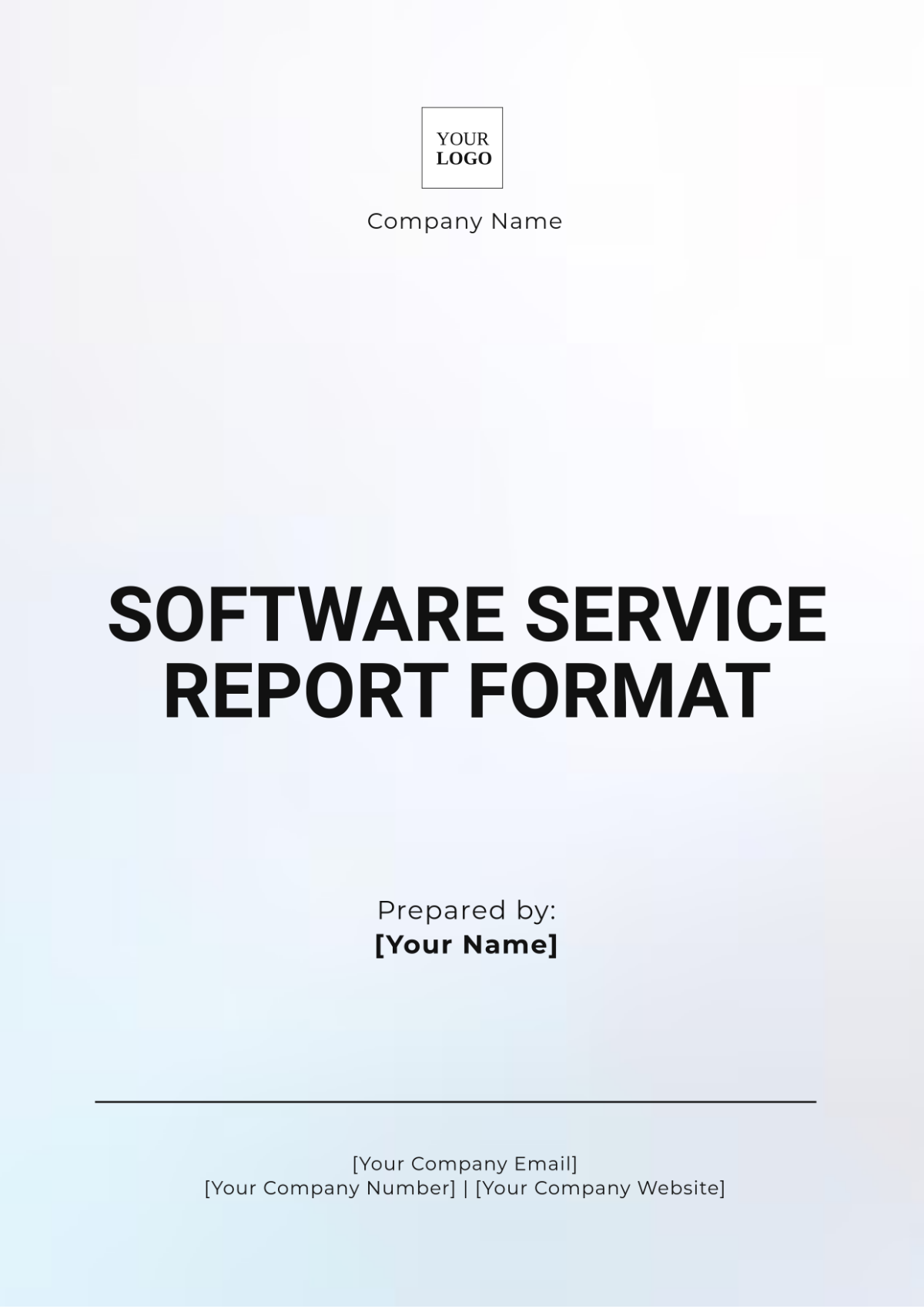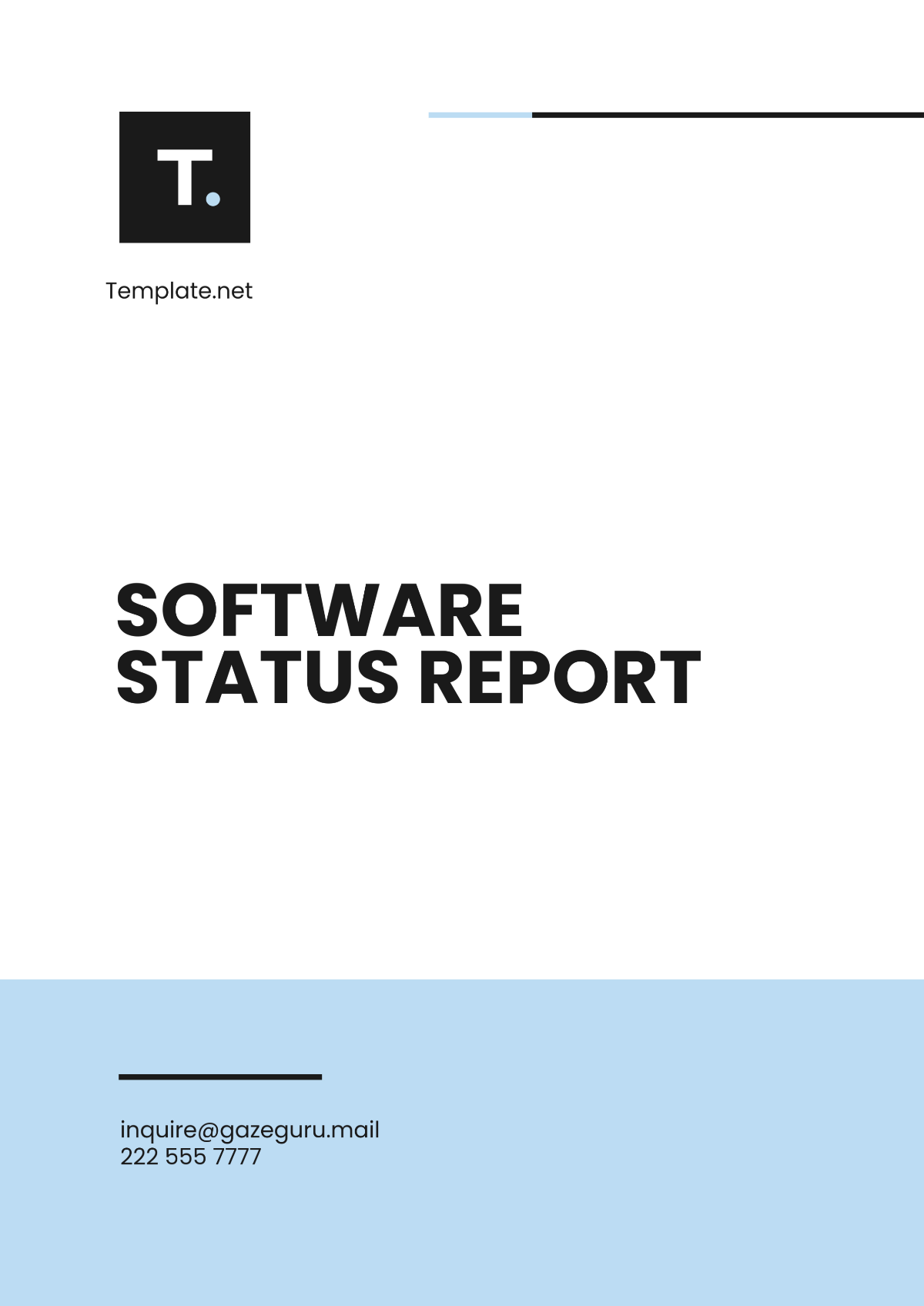Software Status Report
Prepared by: [YOUR NAME]
I. Introduction
In the period from January 1, 2051, to June 1, 2051, the [YOUR COMPANY NAME] software development team has made significant progress towards the completion of the SmartCity App project. This report aims to provide an overview of the project's current status, highlighting key milestones, achievements, and challenges encountered during this period.
II. Project Overview
Project Details | Information |
|---|---|
Project Name | SmartCity App |
Project Manager | [YOUR NAME] |
Client | Jean Harris |
Project Start Date | January 1, 2050 |
Projected End Date | December 31, 2051 |
Current Date | June 1, 2051 |
III. Milestones Achieved
Milestone | Completion Date | Description | Impact |
|---|---|---|---|
Design Phase Completed | May 15, 2051 | All design documents and wireframes are finalized. | Sets the foundation for the development phase. |
Frontend Development | May 30, 2051 | Frontend development for the user interface was completed. | Progressing towards the project's finalization. |
IV. Work Completed
Tasks Completed: 80% of planned tasks completed. This includes frontend development, database design, and initial backend setup.
Percentage of projects completed: 60%. The project is on track according to the initial project plan and timeline.
V. Key Challenges
Despite the progress made, the project encountered several challenges during this reporting period:
Resource Constraints: Limited availability of front-end developers slowed down progress. Mitigation efforts involved redistributing tasks among the existing team members and exploring options for outsourcing.
Scope Creep: Additional feature requests from the client led to scope expansion. Efforts were made to carefully evaluate each request and prioritize based on impact and feasibility to minimize disruption to the project timeline.
Integration Issues: Difficulty integrating third-party APIs into the system. Close collaboration with the API providers and thorough testing were conducted to identify and address compatibility issues.
VI. Risk Assessment
The following risks have been identified and are being actively monitored:
Budget Overrun: Implementing additional features may lead to exceeding the project budget. Mitigation efforts involve regular budget reviews and proactive communication with the client regarding the financial implications of any proposed changes.
Technical Debt: Rushing through development to meet deadlines may result in accumulating technical debt. To mitigate this risk, regular code reviews and refactoring sprints are scheduled to ensure code quality and maintainability.
Client Expectations: Managing client expectations amidst scope changes and delays. Mitigation efforts include transparent communication, setting realistic expectations, and providing regular progress updates to keep the client informed and engaged in the project.
VII. Next Steps
Moving forward, the team will focus on:
Backend Development Sprint: Implementing backend functionality and business logic according to the project requirements.
QA Testing and Bug Fixes: Conducting comprehensive quality assurance testing to identify and address any issues or bugs. Ensuring the application meets quality standards before deployment.
Client Demo and Feedback Sessions: Organizing regular demo sessions with the client to showcase progress and gather feedback. Iteratively refining the application based on client input to ensure alignment with expectations.
VIII. Conclusion
In conclusion, the SmartCity App project is progressing according to schedule, with key milestones achieved and challenges being addressed. The team remains committed to delivering a high-quality product on time and within budget.

